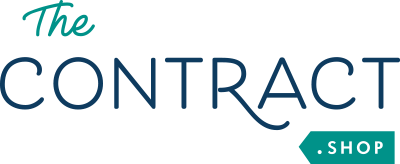Your Cart is Empty
Shop confidently - 14-day no-hassle return policy
Shop confidently - 14-day no-hassle return policy
Shop confidently - 14-day no-hassle return policy
Freelancers and entrepreneurs alike are reaching a state of panic when it comes to advertising their services in this competitive market. With so many companies taking a curious peek at artificial intelligence software or opting for a yearly subscription to Canva for generic templates, drafting designer contracts can feel pointless.
The truth is, more and more companies who have opted for the easy way out of paying skilled professionals are paying for it in spades. What contract graphic designers do is provide customized, creative, and unique designs for clients that they can use to distinguish and build their brand–something AI can’t always accomplish effectively.
What every freelance graphic designer needs to do is map out several factors that determine how much you should charge. Do you charge a flat rate for all clients? What if different clients need different services? Can you charge hourly? We’ll dive into all that and more below.
Typically, graphic designers in the United States charge anywhere between $25 and $300 per hour; this range includes designers who are fresh and just starting their careers to those who have been established for decades and highly-rated. This range is not a hard-and-fast rule, meaning that just because you’re newly stepping into this field doesn’t mean you need to settle for a $25 an hour rate.
When setting your rates and charging clients, you need to consider these critical factors:
It’s no secret that the person with the most experience, training, and positive feedback will be more of an authority on graphic design as compared to someone who is new and unknown. Beginners with formal training (either through coursework, a degree in a higher education, or other types of formalized certification) will typically charge between $25 and $50 per hour for a project.
However, if you are freelancing or contracted, you may find clients will request to pay for a flat rate for the entire project and work from there. This is because newer designers may take more time to complete the same project than an experienced designer, while still outputting similar quality. When developing contracts with employers and clients, we recommend you estimate how long a project will take you and charge a flat rate based on the hourly rate you believe to be fair multiplied by the estimated hours. For example, if a project will take you twenty hours and you have a rate of $30 per hour, propose a flat rate of $600 for the project’s labor hours.
For more established or experienced designers, the typical rates start at around $100 per hour. However, if you have this knowledge and experience under your belt, it is more worthwhile to suggest a flat rate or charge by the project, as it will likely take you less time to complete the same project as an inexperienced designer.
As mentioned above, the scope of the projects has a large impact on what you charge. This is why it’s critical to draft customized contracts with clients for every project.
If you charge $150 as a flat rate for a logo design and spend two hours on the logo design, that’s an easy $75 per hour on the project. However, if your client comes back requesting revision after revision, requiring several meetings and tacking on more tasks, you may end up spending around twenty hours on this project, reducing it to $7.50 an hour!
Your contracts need to factor in time spent meeting and reviewing the work, how many revisions are permitted before additional fees begin to incur, and a clear outline of the scope of the project. When clients request further services or anything outside the scope of the project detailed in the contract, it’s time for a new contract!
Ultimately, you know the quality of your work and the insights you offer to a client. Someone with the same credentials as you may not have the energy, creativity, or communication skills that you do, making you a more valuable asset to a project.
When you set your rates, consider the skills you bring to the table. Clients will pay for quality, and as they see how you deliver on your promises, they’ll be more than willing to pay for the elevated experience you provide. If you have more clients that provide positive reviews testifying to your quality, future clients will be more inclined to pay higher rates for a reputable designer.
How you set your rates as a graphic designer varies depending on your experience level, the scope of the project, and the overall quality you provide as a designer. Unlike other contract templates, The Contract Shop® knows how nuanced the creative industry is. Check out our services and customizable templates today to add the professional touch to your small business.
Kevin Gallagher is the CEO of The Contract Shop®, a contract template store for creative entrepreneurs, freelancers, coaches, and more. His background is in helping online businesses grow, having previously worked at Allbirds managing part of their operations. He is proud to report that his digital artist wife Mandy is a happy customer of The Contract Shop®, and his main motivation is to help as many people like her as possible with the tools that they need to confidently manage their businesses.
Comments will be approved before showing up.
